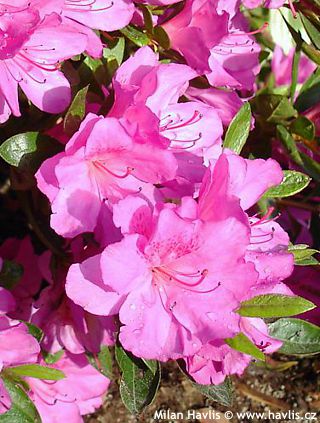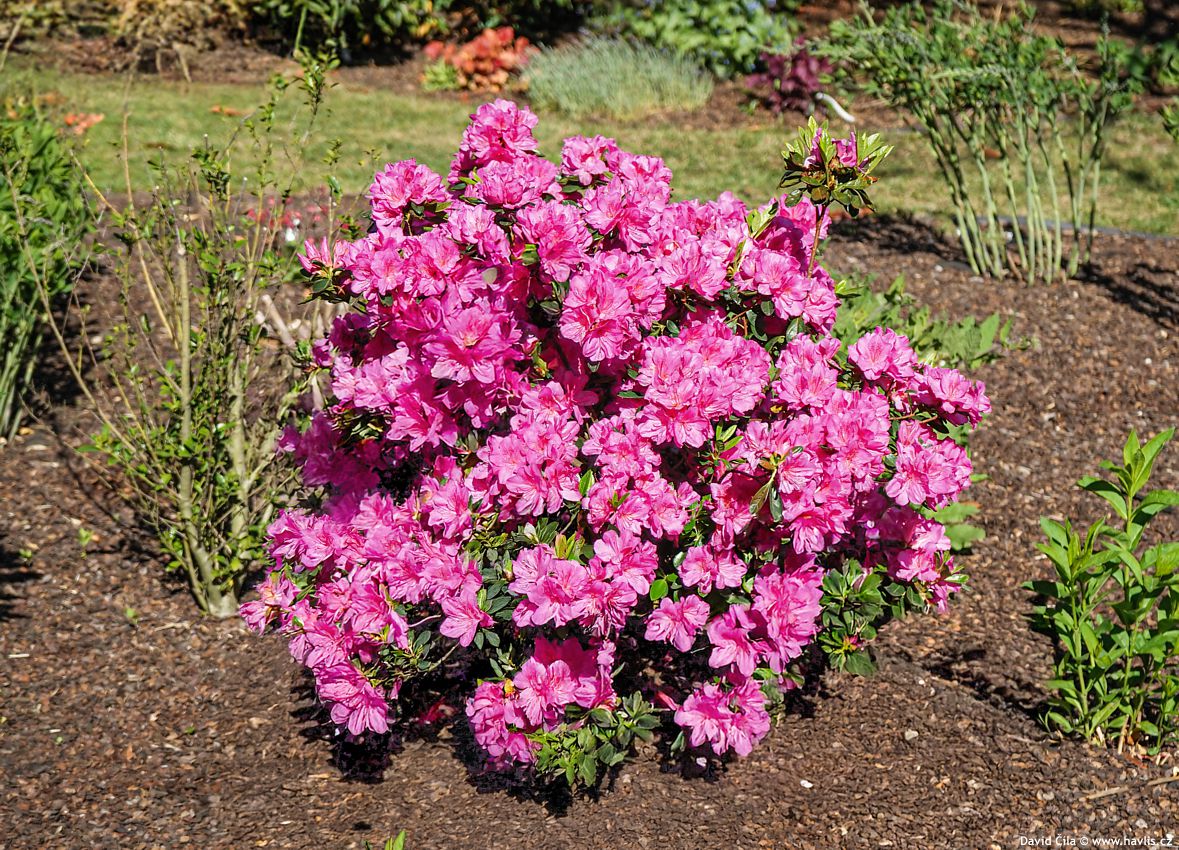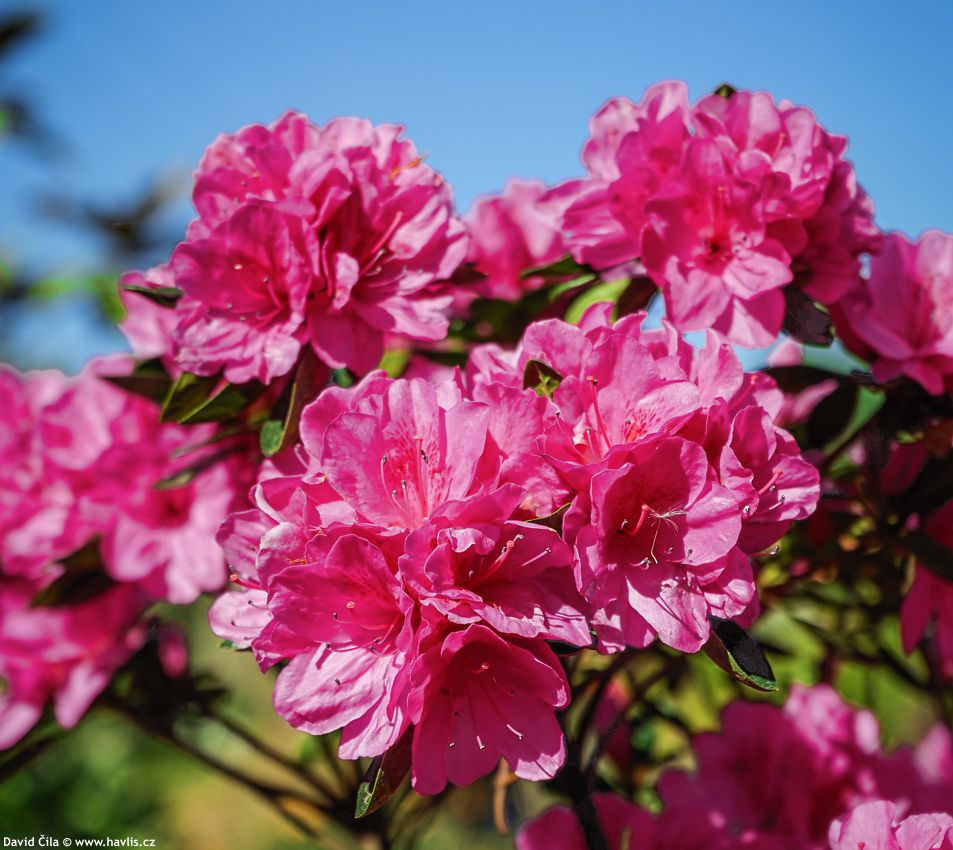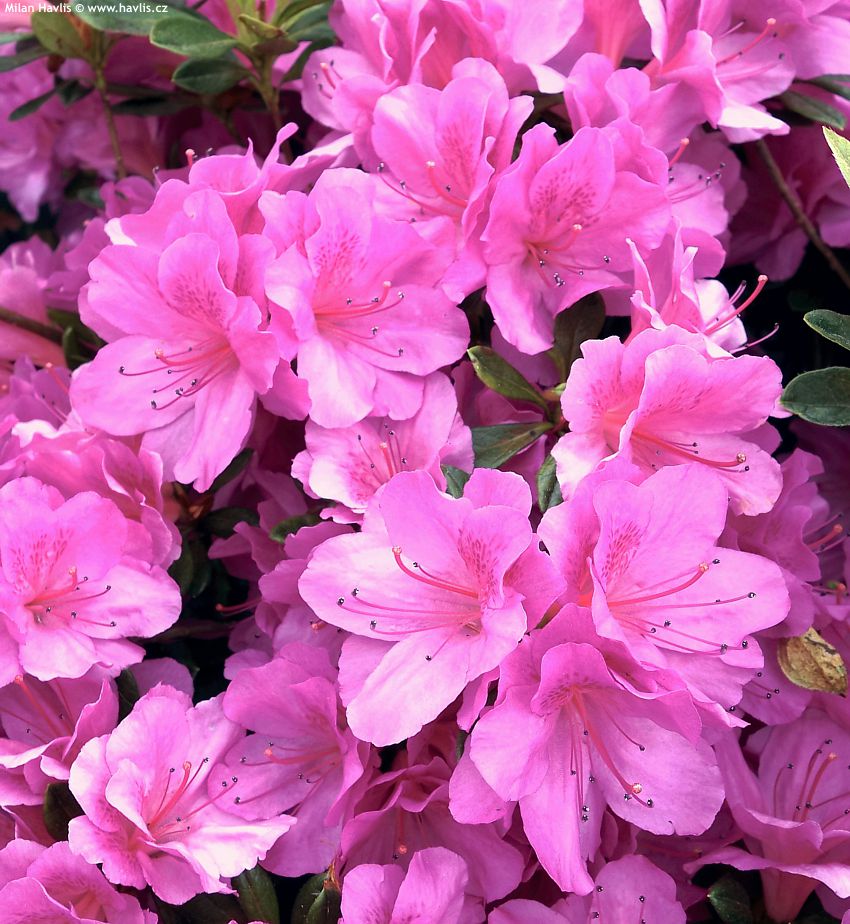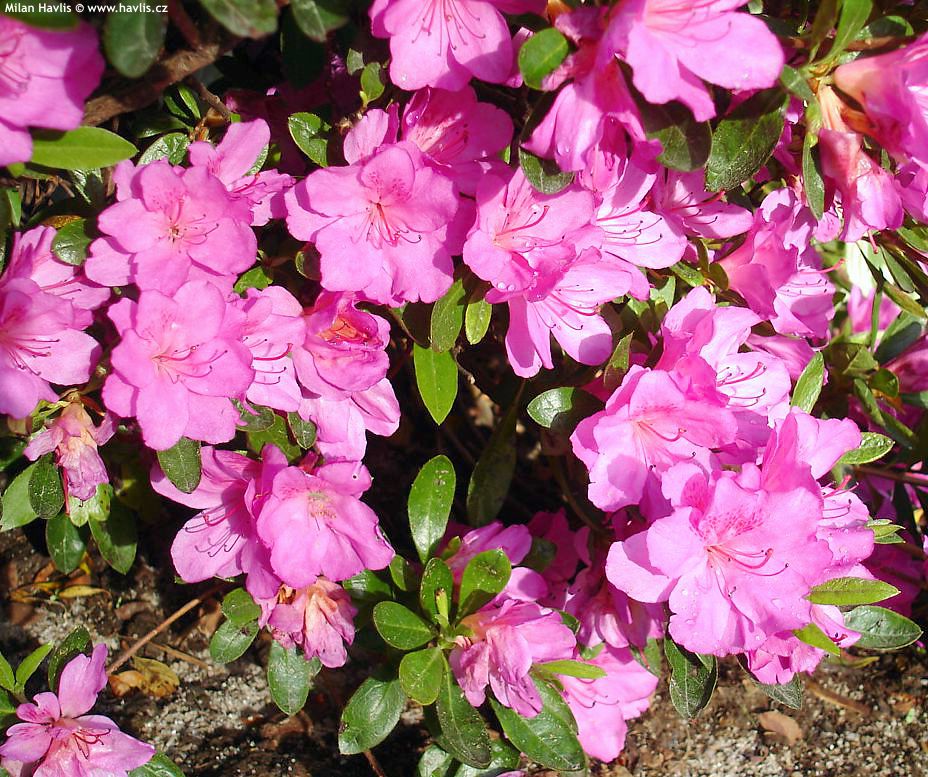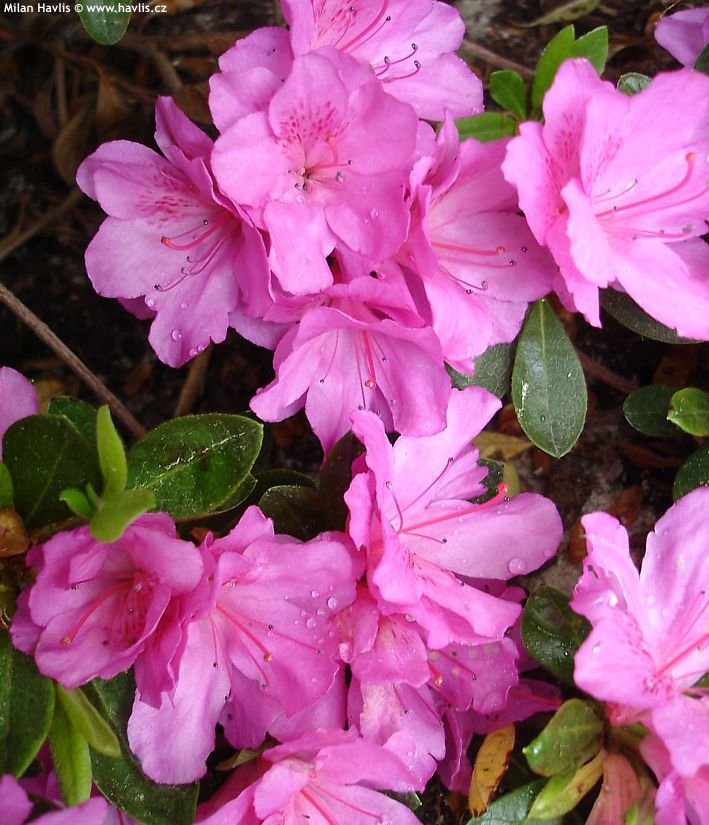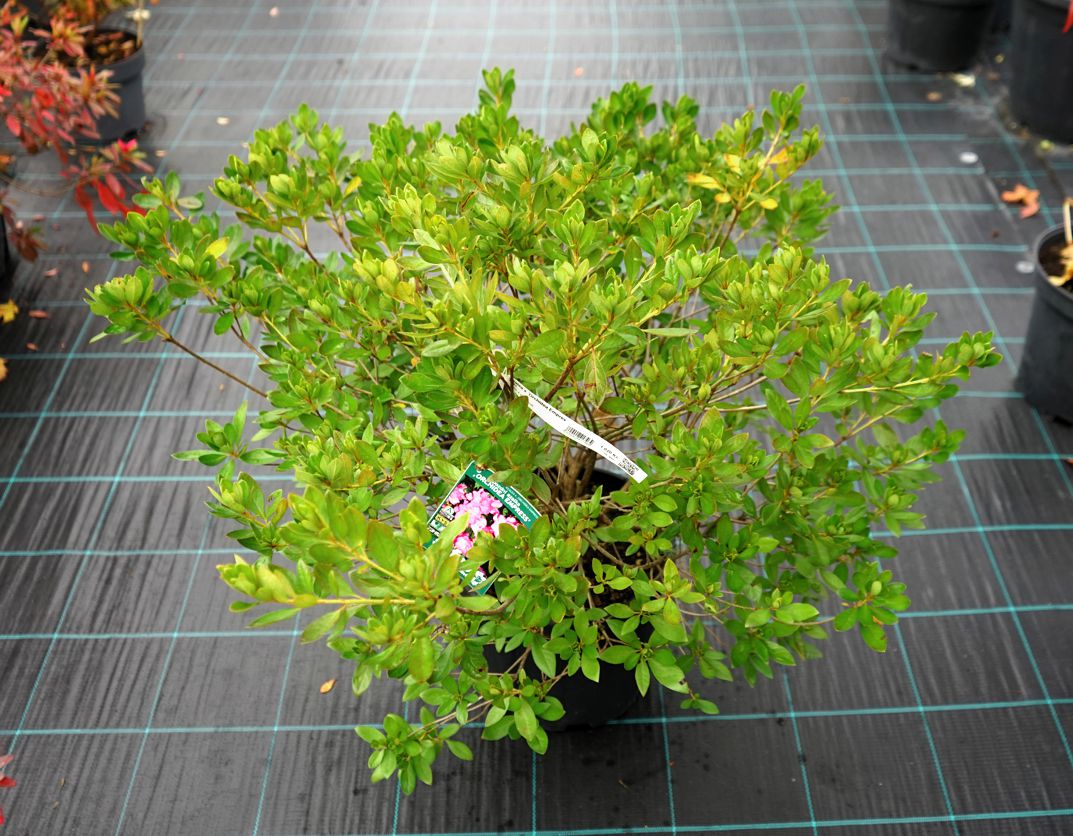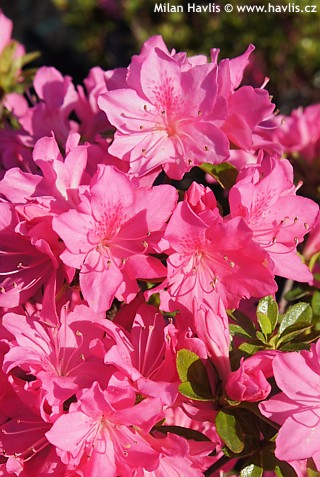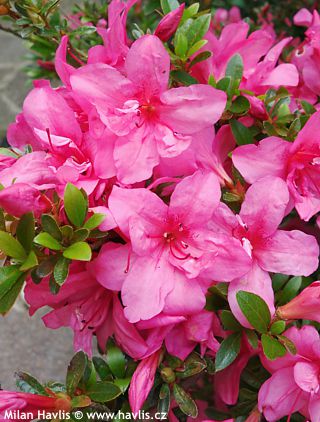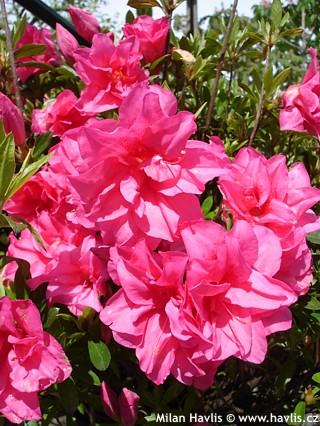Azalea x 'ORCHIDEA EMPRESS' Japanese hybrid azalea
Azalea
Among Japanese azaleas there are groups that originated as natural hybrids or were hybridized by botanists. Most of these hybrids are late flowering plants which brings a whole new view on evergreen azaleas.
Orchidea Empress is a gorgeous name for a gorgeous azalea. It is another of late flowering hybrids, this time with bright pink, hose-in-hose flowers that appear from about mid June for 3-4 weeks. It is never the whole shrub blooming, individual buds burst out continuously one by one. It is not only the double flowers that attract attention. The leaves of this variety are an equally beautiful feature for which many growers use it as an evergreen plant where flowering is just a bonus. The evergreen leaves are widely elliptic, 3-5 cm long, deep green and rather mat. Orchidea Empress azalea forms an elegant, densely foliated cushion.
Azaleas usually need no pruning but can be clipped to shapes in early July after flowering. If so, do not use fertilizers enhancing growth rate. The size of new branches would get out hand and spoil the shape you are going to achieve. If can be placed in full sun if grown in excellent soil with equal moisture throughout the season. They need light, permeable soil that is acid, constantly moist (keep azaleas mulched at all times) and moderately fertile. Use fertilizers for rhododendrons and azaleas, or ericaceous plants. The best soil mix is 1/3 of peat, 1/3 of leaf-mould or lime-free compost, and 1/3 of soil from the hole where you are going to plant it. Azaleas have shallow roots, so do not plant not too deep. If leaves turn yellow or fall down after winter it is planted in wet or heavy soil. Hardiness tested to -21°C (USDA zone 6b) and is expected to go yet a little lower.
Last update 06-01-2011
Goods are shipped all over Europe. For Russia and U.K. and for further details please read about SHIPPING OPTIONS HERE.
Are you interested in a serious discount for orders NOV-FEB? Check your options here.
THE PRICES INCLUDE VAT of 15%. For quick conversion you can use 1 CZK = approx. 0.04 EUR
- STANDARD QUALITY - Plants of this group are 1st class quality with number of branches and overall density adequate to their size and age, considering they were container grown.
- DE LUXE QUALITY - This label guarantees a luxurious quality of manually selected plants that, compared to their height and age, are exceptionally dense and beautiful.
- EXTRA - These plants are usually mature and bigger specimens with exceptional overall appearance.
- STANDARD (as described in the plant form) means a tree with a trunk of 190-210 cm and a crown at the top, unless specified differently. The commercial size for trees is their girth measured in the height of 1m from ground.
- HOBBY - These plants are of the same quality as our standard-quality plants but younger and therefore cheaper.
- SHRUB - a woody plant with branches growing bushy from the ground level.
- HALF-STANDARD or MINI-STANDARD - a small tree with shorter trunk, its size is usually specified.
- FEATHERED - These are trees with branches growing already from the base of the trunk and up along the stem.
- GRASSES and PERENNIALS - Sizes given usually read the diameter of the pot or the clump, as specified.

































